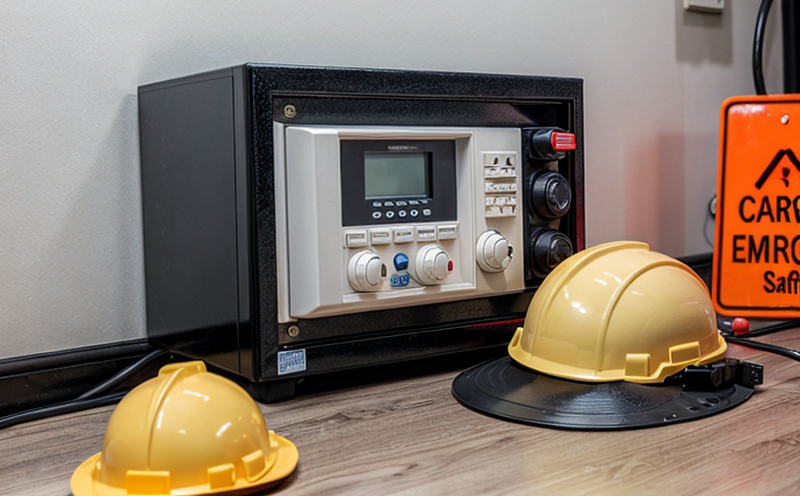FAA TSO-C173 Emergency Evacuation System Testing
The FAA TSO-C173 is a critical standard that ensures the safety and reliability of emergency evacuation systems in aviation. Compliance with this regulation is mandatory for all aircraft manufacturers, operators, and maintenance personnel involved in the design, certification, manufacturing, modification, or installation of these systems.
FAA TSO-C173 applies to various components of an emergency evacuation system such as slides, chutes, inflation mechanisms, and deployment devices. The testing procedures outlined in this regulation are designed to ensure that these components meet the highest safety standards before being used on commercial aircraft.
The process involves a series of rigorous tests aimed at evaluating the performance characteristics of the emergency evacuation systems under various conditions. These include static load testing, dynamic loading, wind tunnel testing, and environmental stress screening. The goal is to verify not only the immediate functionality but also the long-term reliability of these critical safety devices.
Static load testing involves subjecting the components to a predetermined load for an extended period to assess their structural integrity. Dynamic loading tests simulate real-world conditions during deployment by applying loads in a controlled manner, ensuring that all parts function correctly and safely under stress. Wind tunnel testing is used to evaluate how the system behaves in high-speed airflow conditions, which can significantly impact its performance.
Environmental stress screening helps identify potential weaknesses or defects early on through exposure to extreme temperatures, humidity levels, and vibrations. This step ensures that any issues are addressed before the product reaches operational use.
In addition to these mechanical tests, electrical and electronic components must also undergo thorough scrutiny. Circuit integrity checks ensure proper functioning of sensors, control systems, and other critical electronics involved in deploying the evacuation system. Fire resistance tests assess how well materials withstand flames without igniting easily or releasing toxic gases.
Compliance with FAA TSO-C173 requires meticulous attention to detail throughout every stage of development—from initial design concepts through final assembly stages. Manufacturers must document all aspects of their processes meticulously so that they can demonstrate adherence to the required standards during inspections by regulatory bodies like the Federal Aviation Administration (FAA).
Failure to meet these stringent requirements could result in significant delays or even grounding of aircraft until corrections are made. Therefore, investing time and resources into thorough testing early in the manufacturing cycle is essential for avoiding costly mistakes later on.
Our laboratory specializes in providing comprehensive FAA TSO-C173 emergency evacuation system testing services tailored specifically to meet your unique needs. With state-of-the-art facilities equipped with industry-leading equipment, we offer precise measurements and accurate results that help ensure compliance with all applicable regulations while enhancing overall safety standards within the aviation sector.
Why It Matters
The importance of FAA TSO-C173 cannot be overstated when considering the critical role played by emergency evacuation systems in aviation. These systems are often referred to as "lifesavers" because they provide passengers and crew members with a safe means of exiting an aircraft during emergencies such as fires, crashes, or other hazardous situations.
When properly designed and maintained according to FAA TSO-C173 standards, these systems can save lives by ensuring that everyone has enough time to evacuate safely. In the event of an emergency landing or crash landing, having reliable evacuation equipment in place could mean the difference between life and death for those onboard.
Compliance with this regulation also helps protect airlines from potential legal liabilities associated with accidents involving improperly designed or manufactured emergency evacuation systems. By adhering to the strict guidelines outlined by FAA TSO-C173, manufacturers can demonstrate due diligence in protecting both their passengers and employees while minimizing risks of litigation.
In addition to safeguarding human life, compliance plays a crucial role in maintaining public confidence in aviation safety. Passengers expect that when they board an aircraft, it will be equipped with reliable emergency evacuation systems capable of performing flawlessly under pressure. Meeting FAA TSO-C173 requirements helps reassure the traveling public about the reliability and effectiveness of these essential safety features.
From a broader perspective, adhering to such stringent testing protocols contributes positively towards improving overall aviation safety standards globally. By setting high benchmarks for emergency evacuation systems across different aircraft types, FAA TSO-C173 encourages continuous improvement in design and manufacturing practices within the industry as a whole.
Industry Applications
- Airbus A320 Family
- Bombardier CSeries
- Boeing 737 MAX
- Fokker 100
- Messerschmitt-Bölkow-Blohm (MBB) Do 32
- Sukhoi Superjet 100 (SSJ-100)
- Bombardier CRJ Series
These applications highlight the diverse range of aircraft that rely on FAA TSO-C173-compliant emergency evacuation systems. From regional jets to wide-body passenger planes, every type of commercial and private jet requires rigorous testing to ensure safety during emergencies.
Environmental and Sustainability Contributions
The emphasis placed on environmental factors in FAA TSO-C173 testing contributes significantly towards sustainability efforts within the aviation industry. For instance, ensuring that materials used in constructing evacuation systems meet stringent flammability standards helps reduce smoke production during fires—a major contributor to respiratory issues among evacuees.
Additionally, by incorporating energy-efficient designs into these systems, manufacturers can contribute positively toward reducing carbon footprints associated with air travel. This includes optimizing weight distribution so that fewer resources are needed for manufacturing and transportation while simultaneously enhancing fuel efficiency through more aerodynamic shapes or streamlined configurations.
The focus on durability also plays an important role in promoting sustainability by extending the useful lifespan of these essential safety devices. Longer-lasting components mean less frequent replacements, which translates into reduced waste generation over time.





